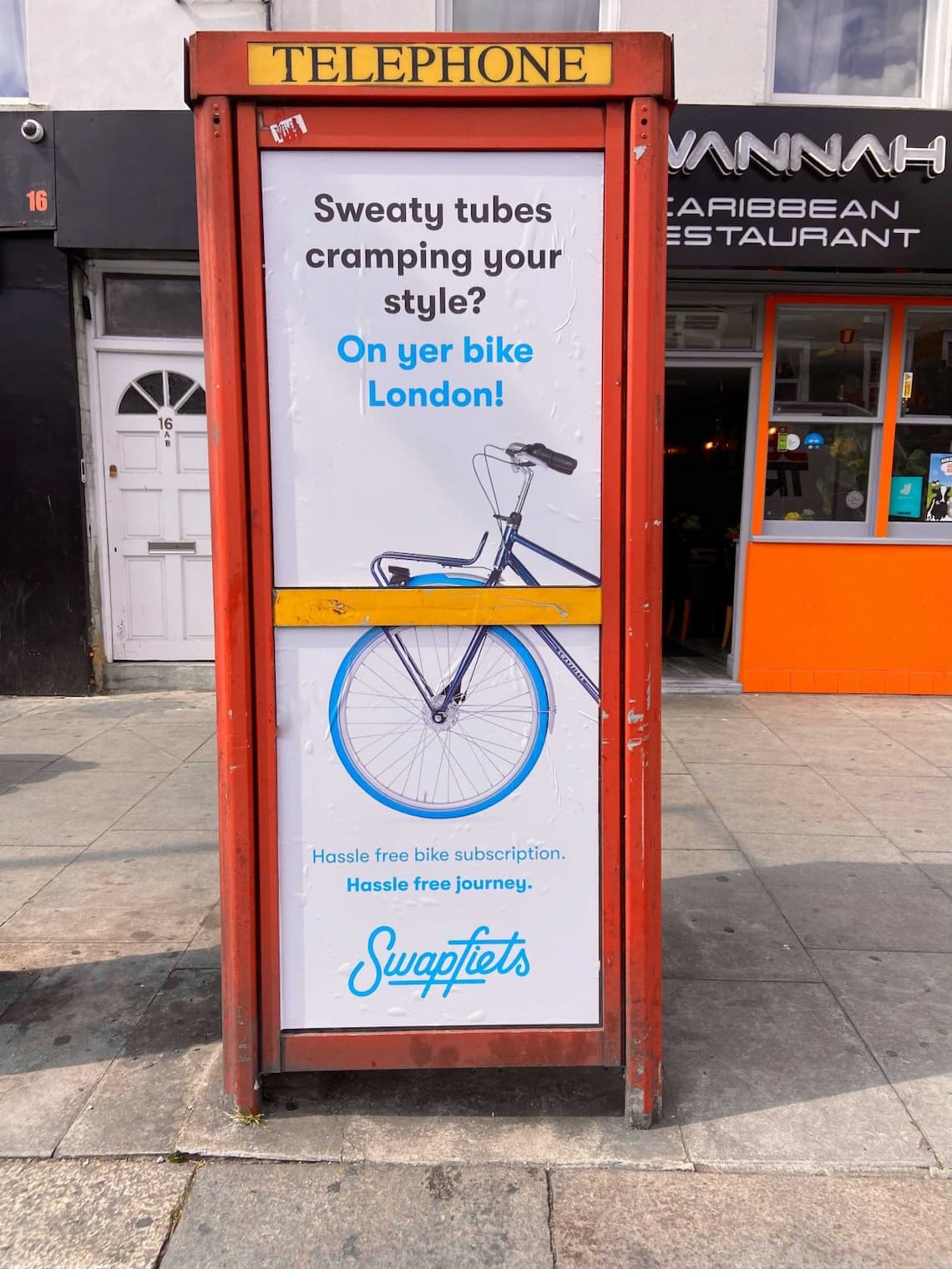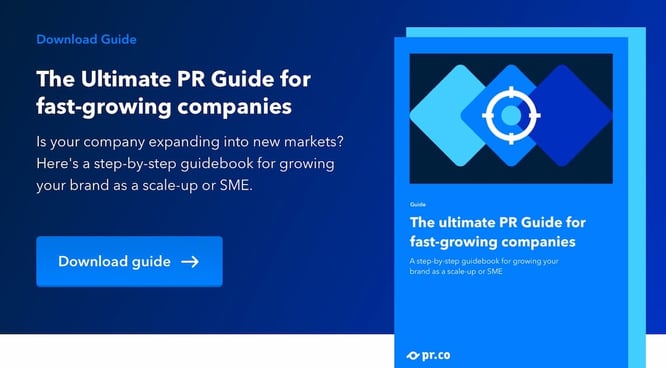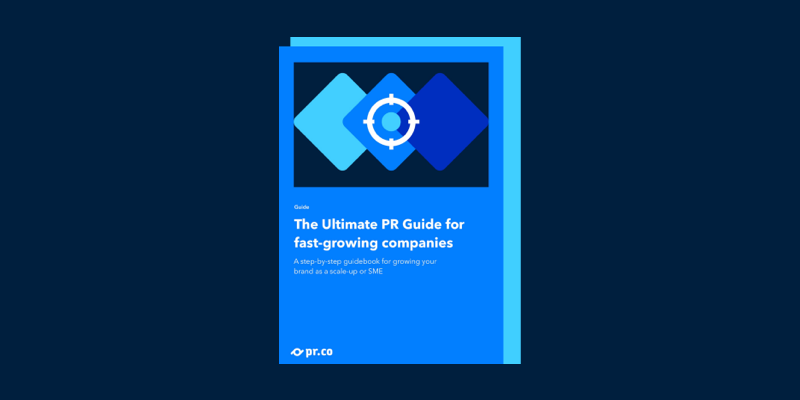In 2003, Powergen Italia, a battery charger manufacturer, was looking to conquer new markets, namely English-speaking countries. To begin with their expansion, they knew they had to prep their website for new markets. This meant translating it for English-speaking customers. Powergen Italia decided to go with the most obvious website address: www.powergenitalia.com, without realizing how it would read. Not doing some proper research and elemental soundproofing came at a heavy price to their branding efforts. The Italian company later went on to modify its URL to www.batterychargerpowergen.it. But the damage was already done.
If you’re planning on taking your brand global, there are a few steps you should take to avoid PR fails like the one described above. Even though digital economies and globalization have made it easier than ever to expand to new markets, scaling still imposes an important challenge. Simply translating a message doesn’t cut it.
This is especially true for European markets. Despite its small size and the common belief that European consumers behave in a homogenous way, the continent and its citizens are more fragmented than not. The languages, customs, and behaviors vary every hundred kilometers. Just take Austria, Germany, and Switzerland as an example. Despite the fact they all speak German, the media landscape changes vastly across borders. The same goes with Flemish and Dutch– same language, but vast cultural differences. Therefore, doing proper research on each culture, language preferences, and the media landscape in each market is a must.
In this article, we’ve gathered important considerations and tips for PR pros looking to enter different European countries. This includes some insight into what the market and culture in each country are like and what the media landscape looks like. To make your international expansion a success, we sat down with Matias Rodsevich, founder of PR Lab, who shared his expertise in helping startups scale to other countries, including his PR agency that is now based in both Amsterdam and Stockholm.
Why PR plays an essential role in expansion
Breaking through a market is no easy feat. Especially for startups and scaleups that are competing with established corporations for some time in the spotlight. Standing out from the crowd takes time, effort, and of course, a set budget. However, for many scale-ups, the importance of public relations is often overlooked it's usually the first “cost” to be cut.
In reality, public relations is the most cost-effective way to get your brand noticed and leave a lasting impression. Engaging with new prospects efficiently, regardless of whether they’re new customers, thought leaders, journalists, or the community in general, can help build strong relationships. These bonds will lead you to connect with the right people, open doors for new opportunities, and establish a stronger reputation when entering a new market.
But, beware, building a reputation takes time. Matias warns, “When scale-ups grow quickly in terms of recruitment or sales, they think the same can be applied to their branding efforts. Unfortunately, PR doesn’t move at the same pace. Reputation takes time to build. If you’re not seeing results yet, it's not necessarily because your tactic isn’t working. It might be because you haven’t given it enough time. To build a reputation you have to establish relationships, which means implies attending and organizing events, talking to the press, sharing insights and vision, creating value, and putting yourself out there.”
Entering European markets
Diversity is celebrated across Europe. This deep appreciation of dissimilarity translates to the way Europeans do business. If you’re entering a new European country, there is an immeasurable value in understanding the way each region speaks, thinks, and likes to be spoken to.
“In my experience, I’ve learned that expanding beyond borders is not rocket science. There really is no straight answer, no guidebook, no manual. It’s very advice-based and experience-based,” says Matias. Below, we’ve gathered some tips on entering some European markets. While the list is not exhaustive, we hope it gives you a glimpse into the differences in markets, cultures, and media landscapes in some European countries:
Jump to:
How to enter the United Kingdom
Market
The UK market is widely known as a gate to global markets. Not only does the English language bridge the gap with other countries, but its long history of trade and its diversity also make it easier for international companies to succeed in the UK. Because of this, UK companies are open to working with international partners and multicultural environments. Therefore, this market seems friendly to outsiders and a relatively easy open.
While the startup scene thrives in the UK, it goes without saying that it’s also pretty crowded. Standing out can be tough when there are so many players in the industry. One of the most common struggles startups and scale-ups face is rising above the noise and grabbing the press’ attention.
Culture
The Brits have an unquestionable influence on the rest of the world. Just think of Prince Harry and Meghan Markle’s wedding which amassed a total of 1.9 billion viewers around the world. While the UK economy and business culture is open to foreign companies and cooperation, it’s safe to say that the British media (and Brits themselves) tend to be UK-centric. If you want your scale-up to get noticed, you have to have a local presence. This means either UK funding or UK customers. It also goes without saying that it’s crucial to have a native speaker in place that can speak to the media to answer any queries.
Speaking of spokesmanship (forgive the repetition), we recently sat down with the global spokesperson from one of the world’s biggest companies. Here’s what we learned about what it takes to be the face and voice of a brand.
 ▲ When in London, do as Londoners do. Here's an example of how Swapfiets, a Dutch-founded bike subscription service, adapted its messaging for its first-ever UK marketing campaign. Dubbed ‘On Yer Bike’, the creative campaign plays on Londoners’ transport frustrations, encouraging them to ditch public transport in favor of cycling.
▲ When in London, do as Londoners do. Here's an example of how Swapfiets, a Dutch-founded bike subscription service, adapted its messaging for its first-ever UK marketing campaign. Dubbed ‘On Yer Bike’, the creative campaign plays on Londoners’ transport frustrations, encouraging them to ditch public transport in favor of cycling.
Media landscape
The UK media landscape is strongly influenced by mass circulation of national press and a system of public service broadcasting, led by the BBC. Although the press and broadcasting are organized on a national level, the presence of regional and local media is still important, especially in Scotland, Wales, and Northern Ireland.
Like most countries, the readership of printed press has been steadily falling due to readers moving to digitally available news. According to Reuters, the circulation of print newspapers, which are still mainly distributed via newsstands, has declined on average by 10%. Meanwhile, the importance of television news increased during and after the pandemic, with the BBC, ITV, and Sky News all reporting an increase in weekly reach. The country is well adapted to digital media, with an impressive 95% internet penetration. It’s safe to say that the national press, in all its formats, is quite influential in the public sphere, particularly around election time.
How to enter Denmark
Market
With a population of 5.8 million, the Danish market is a small, yet relatively easy market to enter. For starters, Danes are well educated and have a good command of English. Although Danish is predominant, more than 86% of Danes speak English as their second language. This high proficiency in English allows for international business relations.
Therefore, the Danish economy and business culture are very open to foreigners. Denmark’s size and lack of important regional differences make this country a test market and gate to Nordics.
Culture
Danish culture is open, but also very modest. There’s no room for fluffing or bragging and arrogance is certainly not welcome. Danes also avoid conflict when possible and they prefer negotiations and consensus over demonstration. So if you’re entering the Danish market, make sure to adjust your tone of voice accordingly. Another factor to keep in mind is the Danish sense of humor, which often relies on irony and sarcasm.
Media landscape
As the country is small and homogeneous – the media landscape is centralized. There are several flagship media – three national dailies, two tabloids, and two main TV stations. Younger generations usually prefer international networks. After the pandemic, many of these young consumers have shifted towards audio, preferring to listen to news via podcast or automated audio versions of news articles.
How to enter Poland
Market
If you were to ask any entrepreneur about the real startup hubs in Europe, they’d probably mention London, Amsterdam and Berlin first. However, over the past few years activity in Eastern Europe has increased tremendously. Krakow is now at its epicenter. The startup scene is buzzing with innovative startups and scale-ups alike. The Polish market is quite big, as the population of this country nears 38 million people. There is a high acceptance of technologies and online services may partly be due to its young demography.
Culture
Don’t underestimate the market and the audience. Poles tend to be sensitive to condescension, which may arise from its domination by the Soviet regime. Poles may also be a bit oversensitive about treating them equally and with respect. Even if Poland isn’t your priority market, don’t show it. Give them the time and effort they deserve.
Media landscape
Like in most countries, the pandemic accelerated subscriptions to digital media. However, a presence in printed media is still perceived as something desirable.
Despite its size, Poland is still a fairly centralized country – large institutions, advertising giants and the media are based in Warsaw. This, however, doesn’t mean you shouldn’t keep regional media in sight.
How to enter Sweden
Market
The Swedish market is highly competitive, yet fairly open to foreign competitors. “They are not afraid of innovation and sustainability is a core focus for any type of company,” says Matias Rodsevich, founder of PR agency, PR Lab, a global PR agency specialized in fast-growing tech companies, which recently expanded to Sweden.
In comparison to markets like the Netherlands or UK, Sweden is pretty small. Although Swedes have a high proficiency in English, you will mostly hear Swedish on the streets. Moreover, the absorption of web technologies and services is one of the highest in Europe and in the world. 99% of Swedish households have broadband access to the internet. So if you plan on entering the market and capturing consumers’ attention, reach the Swedish market online before you do so physically.
Culture
When it comes to succeeding in Sweden and getting yourself in the loop, you will need recommendations, intros, and references. Especially in the B2B sector. Matias explains, “Swedes prefer networking through introductions instead of meeting strangers. They like the exclusive aspect of events.”
Another thing you should keep in mind is the lack of titles. The work environment in Sweden is casual with a flat hierarchical structure. This means reaching out to an assistant at a media outlet is a strategic move since the Editor-in-Chief might not be as warmed up to you yet.
 ▲ Cartoon by Kendra Allenby
▲ Cartoon by Kendra Allenby
Media Landscape
The media landscape in Sweden is pretty small and focused on local stories. Having a connection to the community or thought leaders is a way to help you land coverage. “If you’re a Swedish-based company or if you have Swedish founders, it’s way easier to earn coverage than if you’re solely an expat,” explains Matias. Another big learning from PR Lab’s expansion to Sweden is the difficulty of landing a backlink from the media. “There are very strict guidelines from journalists and I guess it’s a cultural thing as well,” says Matias.
How to enter France
Market
For many companies, France is the primary gateway to the European market. Although it may seem closed off to international players due to its pride of their own culture and language, it's only a matter of doing proper research to succeed. While the French can be receptive to new and innovative products, there is still a tendency to rely on local suppliers.
Culture
If you’ve ever visited Paris, you must have encountered a waiter demanding you order your crème brûlée in French. And while most stereotypes are loosely based on reality, one thing is sure, the French do prefer you speak to them in their language. So showing you are making an effort can help you build rapport with your French counterpart.
Developing close personal business relationships is important for the French. They are interested in long-term partnerships that are maintained through regular in-person meetings. To establish these relationships, mutual trust and respect is a must.
The French take their ‘rendez-vous’ very seriously. PR in France is heavily based on the personal relations built with journalists and thought leaders. This means that if you plan on entering the French market, first you will have to gain trust, meet with the media, explain your product or service, and offer them valuable insight.
Media Landscape
While printed press was widely affected by the pandemic, broadcasting companies and digital media were benefitted by the digital-only approach. Reuters reports an increase in trust in the French media but a decrease in revenue.
How to enter the Netherlands
Market
Don’t let its small size fool you, the Netherlands is one of the most important European markets. Because of its trading culture, international connections and its geography, the Netherlands is a strategic move for companies looking to expand in Europe.
The Netherlands has been recognized multiple (and consecutive) times as having one of the best business climates by international surveys like the World Economic Forum Global Competitiveness Index.
Culture
The Netherlands has a long history of cooperating with foreign partners. Needless to say, they are a relatively easy open. Plus, the Dutch are notoriously known for their high English proficiency. They’ve been recognized as the best non-native English speakers in the world.
However, when dealing with the media, it’s important to have a local spokesperson in place to answer questions, provide assets, and respond to media queries. This will not only save you time and effort, but it will also help build trust with the media and, in consequence, will leverage your chances of being covered.
When it comes to business culture, the Dutch are known for their direct, no-nonsense communication style. Therefore keep the fluff to a minimum. That means no salesy content, jargon or superlatives.
Media landscape
The Dutch media landscape is characterized by increased media concentration, strong growth of digital news use, and the appearance of alternative and sometimes strongly partisan sources. Like many media outlets around the world, editorial staffs are small and their time is limited. Journalists receive thousands of pitches a day and always prefer to receive content that is straightforward, non-salesy and of journalistic quality.
What works in every market
Despite the differences in each market, here’s what works (almost) everywhere:
Localization
If you’re looking to stand out from other stories, your best bet is taking your message and adjusting it to a trending local context and adding an interesting angle. PR is successful as it is relevant. The second your story is not relevant to the segment or the market, it simply won’t work.
A strong hook
Breaking through the noise in any media landscape, regardless of the market you are targeting, is a challenge. If you want to be heard, it’s crucial to find a powerful angle for your story. Study the trends in your industry, offer data and insight, and work together with journalists to add value to their stories.
Avoid spray and pray
Doing your due diligence and researching media contacts properly is a must if you want your expansion to be a success. It’s not enough to download contact information from a database and blindly pitch them.
Be empathetic. If you want to be heard, you must understand who you are speaking to. Get to know the publication, find out which other journalists operate in your same industry, and also get to know the producers, assignment desk, or web desk. Being helpful can go a long way.
Provide material
Put yourself in a journalist’s shoes. If you want to increase your chances of landing coverage, you want to provide any and all material that might be useful to journalists when writing a story. Think high-resolution product images, leadership biographies, lists of awards, and up-to-date contact information. One great place to gather all of this info is in a beautifully designed newsroom.
Start early
Although some advise starting only when a perfect strategy has been crafted, Matias suggests you start as early as possible. “There's so many elements that you don't know and doesn't matter how much research you do. You won’t know until you're doing it. We did a lot of research before we started to open an office in Sweden – we spent months conducting market research, analyzing competitors, talking to people, etc. and when we expanded we still found things that we did not know or we forgot to think about.”
Don’t be afraid to start again
One of the biggest challenges that scale-ups face, according to Matias, is struggling to adjust messaging to the new market they are entering. As a founder, you tend to ‘marry’ the strategy that worked for you in one market and you tend to carry it out in other markets as you expand. Unfortunately, scaling your efforts implies starting from scratch in order to adapt to new markets.
“In my opinion, you should know as much as possible about a market before entering and then have the flexibility to iterate the strategy as you go,” says Matias.
Ana is a marketer at pr.co, and is the driving force behind our 100+ articles and guides. Ana has an MSc in Corporate Communications, and four years of experience in the PR industry. Now, Ana distills knowledge from pr.co’s 250+ customers to help PR professionals get better results through high-quality content.. Connect on LinkedIn or send an email



/Matias-1.png)

